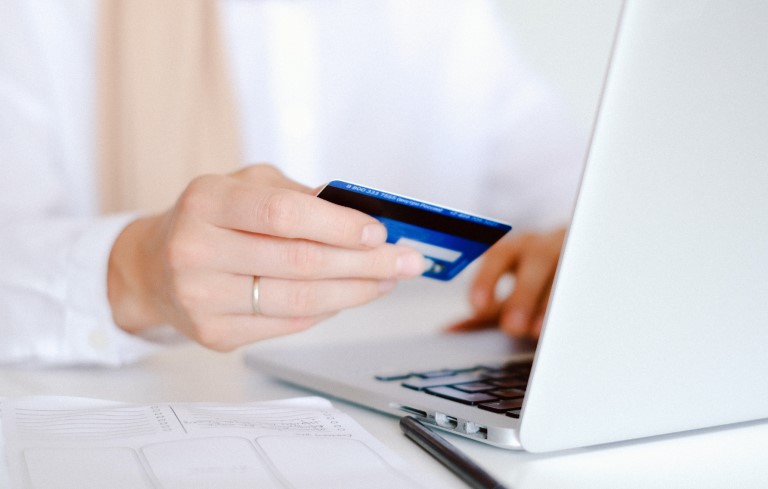Credit card fraud is a serious problem affecting millions of people yearly. Criminals use various methods to steal credit card information and use it for unauthorized purchases. The good news is that there are steps you can take to protect your personal and financial information safely and prevent you from becoming a victim.

Table of Contents
Your credit card holds all the information to make a transaction: name, card number, expiration date, and CVV. If someone has a copy of all this information, they can easily make unauthorized transactions. The best way to prevent that is to hide the information on your card, especially the CVV. What I can recommend is to cover the CVV with a security sticker. This kind of sticker gets easily damaged when someone attempts to remove it. They’re also affordable and available for purchase online. If you see evidence of tampering, call your bank immediately and request a replacement. Also, please don’t leave your cards where anyone can see them. Store them in a secure place and treat them as cash. Also, don’t make a copy of your credit card information on a piece of paper, your computer, or your smartphone without any form of security.
Most banks notify you via SMS or email if your card is used to make a transaction. However, some alerts only happen when a transaction exceeds a certain amount (PHP 1,000USD 17INR 1,445EUR 16CNY 124). You can call your bank and request that you get notified of a credit transaction regardless of the amount. This will also give you a record of what you have purchased by simply scrolling through your SMS.
Be wary of where you use your credit card, especially if you’re unfamiliar with the establishment. Don’t swipe it if the card terminal looks suspicious or tampered with. If you need to use it at an ATM, try to use those in the bank’s premises instead of those in isolated areas. They might be tampered with and installed with a card skimmer that can steal your credit card information.
Credit cards are also helpful in online shopping, but if you visit the wrong website, your credit card information might get stolen through phishing or malware. When visiting sites, make sure that it’s legitimate by checking the URL. Look for websites that have an SSL (Secure Sockets Layer) certificate or start with “https”, as these are more secure and less likely to be hacked. Don’t use your cards on websites you do not know.
Banks have mobile apps where you can access your credit card information and often have features that can help you secure your card. Some have a temporary lock feature that lets you lock your credit card in case you can’t find it or when it is not used. If your bank offers a virtual credit card number for your online purchases, use that to help protect your actual credit card number from being stolen.
Many people wait for their monthly statement to review their transactions; in some cases, that’s the only time they realize an unauthorized transaction on their card. Don’t wait for your statement to review your transactions. Just log in to the mobile and check if there are transactions you’re unfamiliar with. In my case, I do this every other day so that if there’s a fraudulent transaction, it’s easy to dispute it to the bank and cancel my card to prevent future transactions.
This is common advice but still needs to be brought up frequently. If you use a mobile app or web browser to access your credit card details, make sure you use a strong password. If there’s a feature to use 2FA or OTP, make sure to use it.
And there you go. If you’re worried about having your credit card info stolen, take these steps to help secure it and give you peace of mind. Credit card fraud and how to avoid them

YugaTech.com is the largest and longest-running technology site in the Philippines. Originally established in October 2002, the site was transformed into a full-fledged technology platform in 2005.
How to transfer, withdraw money from PayPal to GCash
Prices of Starlink satellite in the Philippines
Install Google GBox to Huawei smartphones
Pag-IBIG MP2 online application
How to check PhilHealth contributions online
How to find your SIM card serial number
Globe, PLDT, Converge, Sky: Unli fiber internet plans compared
10 biggest games in the Google Play Store
LTO periodic medical exam for 10-year licenses
Netflix codes to unlock hidden TV shows, movies
Apple, Asus, Cherry Mobile, Huawei, LG, Nokia, Oppo, Samsung, Sony, Vivo, Xiaomi, Lenovo, Infinix Mobile, Pocophone, Honor, iPhone, OnePlus, Tecno, Realme, HTC, Gionee, Kata, IQ00, Redmi, Razer, CloudFone, Motorola, Panasonic, TCL, Wiko
Best Android smartphones between PHP 20,000 - 25,000
Smartphones under PHP 10,000 in the Philippines
Smartphones under PHP 12K Philippines
Best smartphones for kids under PHP 7,000
Smartphones under PHP 15,000 in the Philippines
Best Android smartphones between PHP 15,000 - 20,000
Smartphones under PHP 20,000 in the Philippines
Most affordable 5G phones in the Philippines under PHP 20K
5G smartphones in the Philippines under PHP 16K
Smartphone pricelist Philippines 2024
Smartphone pricelist Philippines 2023
Smartphone pricelist Philippines 2022
Smartphone pricelist Philippines 2021
Smartphone pricelist Philippines 2020